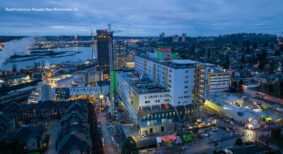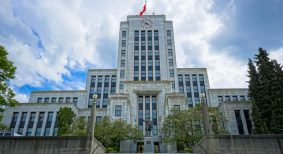British Columbia’s construction sector experienced a modest overall contraction in 2024, as growth in the province’s residential sector, which was principally driven by demand for residential renovations, was not enough to offset a decline in activity on several major projects in the non-residential sector.
BuildForce Canada released its 2025–2034 Construction and Maintenance Looking Forward report for British Columbia. The outlook calls for moderate growth in residential activity to offset a small contraction in non-residential activity.
Although housing starts in the province are generally expected to trend downward across the forecast period as population growth slows and as housing affordability and land limitations influence growth, activity in the sector will be driven by strong growth in demand for residential renovations, which is projected to rise sharply across the forecast period.
The outlook for the non-residential sector is more variable. Activity is projected to ebb and flow through the short-term period, in line with high levels of industrial, commercial, and institutional (ICI) construction and with the timing of work on major engineering construction projects. Growth moderates into 2031 as projects pass peak periods and end.
BuildForce notes that the investment trends and employment projections presented were developed with industry input prior to the emergence of potential trade tensions between Canada and the United States. This forecast therefore does not take into account the possible application of tariffs on Canadian exports to and imports from the United States, nor does it account for any resulting changes in trading patterns between Canada and its other key trading partners.
“Although construction activity over the entire decade is projected to increase only modestly, a closer look at the data tells a different story,” says Bill Ferreira, executive director of BuildForce Canada. “Non-residential construction activity is projected to rise to a peak in 2027 as work is underway on several major engineering-construction projects and is sustained at an elevated level among ICI buildings construction. These trends could create significant pressures among critical trades and occupations.”
The outlook also shows construction employment in the region is expected to increase across the forecast period, with growth exclusive to the non-residential component (9 per cent). Employment in the residential sector is virtually unchanged from 2024 levels by 2034.
BuildForce Canada projects that British Columbia’s construction industry will need to recruit 60,100 additional workers over the forecast period to keep pace with expansion and replacement demands. Of those, 43,800 workers – or 23 per cent of the current construction labour force – are expected to retire during this period.










